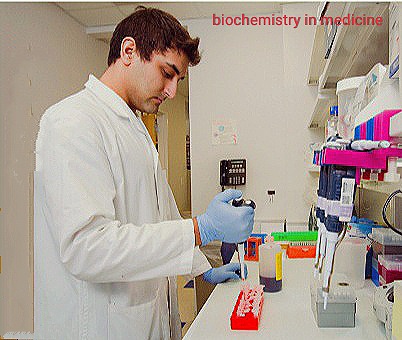Simple Definition of Biochemistry
Biochemistry is the application of chemistry to the study of biological processes at the molecular and cellular levels. It emerged as a distinct discipline in the early 20th century, when scientists combined chemistry, physiology, and biology to explore the chemistry of living systems.What is Biochemistry?
Biochemistry is a field of experimental science aimed at studying the chemical basis and molecular processes of life. The advances in molecular biology, which are among the branches of biochemistry, have been most significant in the last 20 years.The realization of the molecular nature of genetic information related to recombinant DNA engineering techniques enables biochemists to make significant advances in various fields such as human genetics, pharmacology, agriculture. And understanding environmental science and evolution. In this fashion, biochemistry has contributed to the rise and success of biotechnology, an important new sector of the modern economy. Techniques associated with the structural analysis of macromolecules (proteins and nucleic acids) have enabled modern biochemistry to unravel the most intimate mysteries of life.

What is Biochemistry Used For?
There is a clear application of biochemistry in medicine, dentistry and veterinary medicine. Other applications include:- Biochemistry is used to learn about the biological processes that take place between cells and organisms.
- Biochemistry can be used to study the properties of organic molecules, for a variety of purposes. For example, a biochemist may study the properties of keratin in hair to create a shampoo that enhances curls or softness.
- Biochemists find the use of organic molecules. For example, a biochemist may use a specific lipid as a dietary supplement.
- Alternatively, a biochemist may find an alternative to a normal biomolecule. For example, biochemists help create artificial sweeteners.
- Biochemists can help cells make new products. Gene therapy involves biochemistry. The development of biotechnology falls into the category of biochemistry.
What do Biochemist do?
Many biochemists work in chemistry labs. Some biochemists may focus on modeling, which will lead them to work with computers. Some biochemists work in the field, studying the biochemical mechanisms of an organism. Biochemists are usually associated with other scientists and engineers. Some biochemists are affiliated with the university and they may conduct research as well as teach. Typically, their research allows them to have a normal work schedule, based on a location, with a good salary and benefits.Where is biochemistry used?
Biochemistry has obvious applications in dentistry, medicine and veterinary medicine. Other applications include:Food Science
Biochemists determine the chemical composition of food, researching ways to develop abundant and inexpensive sources of nutritious food. Develop methods to extract nutrients from waste products and develop ways to extend the shelf life of food products.
Agriculture
Biochemists study the interaction of pesticides/ herbicides with plants and insects. They examine the structure-activity relationships of compounds, evaluate toxic effects on surrounding life and determine their ability to inhibit growth.
Pharmacology, Physiology, Microbiology, Toxicology, and Clinical Chemistry
Biochemists investigate the mechanisms of drug action; engaged in viral research; conducting organ function research; or use chemical concepts, techniques, and methods to study disease diagnosis and therapy and health assessment.
History of Biochemistry
Although biochemistry is a relatively modern field of knowledge, its predecessors date back to ancient times. A very old example and where organic chemistry is reflected, is in the process of making bread, when yeast is added (fermentation).But the exact beginning of this discipline was in 1828, when Friedrich Ohler published an article on urea synthesis, which proved that organic compounds, contrary to what was believed, could be produced artificially in a laboratory.
Since then, in the 19th century, there has been a rapid increase in the understanding of the substances that make up the body of an organism for the research of Louis Pasteur, Albrecht Kosel, Wilhelm Kuhne, and Edward Buchner.
The real revolution in organic chemistry took place in the second half of the 20th century, in the hands of modern molecular biology. This is due to the advancement of experimental techniques such as chromatography, centrifugation, electrophoresis, electron microscopy, nuclear magnetic resonance and other technologies which have resulted in scientific and technological advances and results in chemistry and science physical.
Thanks to all of this, it has become possible to understand the cell's metabolic cycle, immunology, enzymatic function, and DNA sequencing, allowing for advances in organisms such as cloning, genetic intervention, and gene therapy.
FAQs About Biochemistry
Question: Name three (3) amino acids containing nonpolar, aliphatic R groups.Answer: Amino acids containing nonpolar, aliphatic R groups are Alanine, Glycine, leucine.
Question: Write the differences between DNA and RNA.
Answer: DNA is a long polymer and contains deoxyribonuclease and phosphate backbone. It has four distinct bases, thymine, adenine, cytosine and guanine. RNA is a polymer with phosphate backbone and ribose. It also has four bases uracil, cytosine, adenine and guanine. The location of DNA is the nucleus and mitochondria of the cell. Location of RNA in cytoplasm, nucleus and ribosome. The sugar part of DNA is deoxyribose and the sugar part of RNA is ribose.. DNA is a double standard molecule but RNA is a single standard molecule. DNA self-replicates but RNA cannot self-replicate.
The nitrogen base pairing of DNA is guanine, cytosine and adenine, thymine. The nitrogen base pairings of RNA are guanine, cytosine and adenine, uracil. Kinds of RNA are m-RNA, t-RNA, rRNA, sn-RNA. The helix geometry of DNA is in beta-form and the helix geometry of RNA is alpha-form. DNA is more stable than RNA. DNA remains stable in the alkaline state. Abnormal bases are never present in DNA but may be present in RNA.














No comments:
Post a Comment